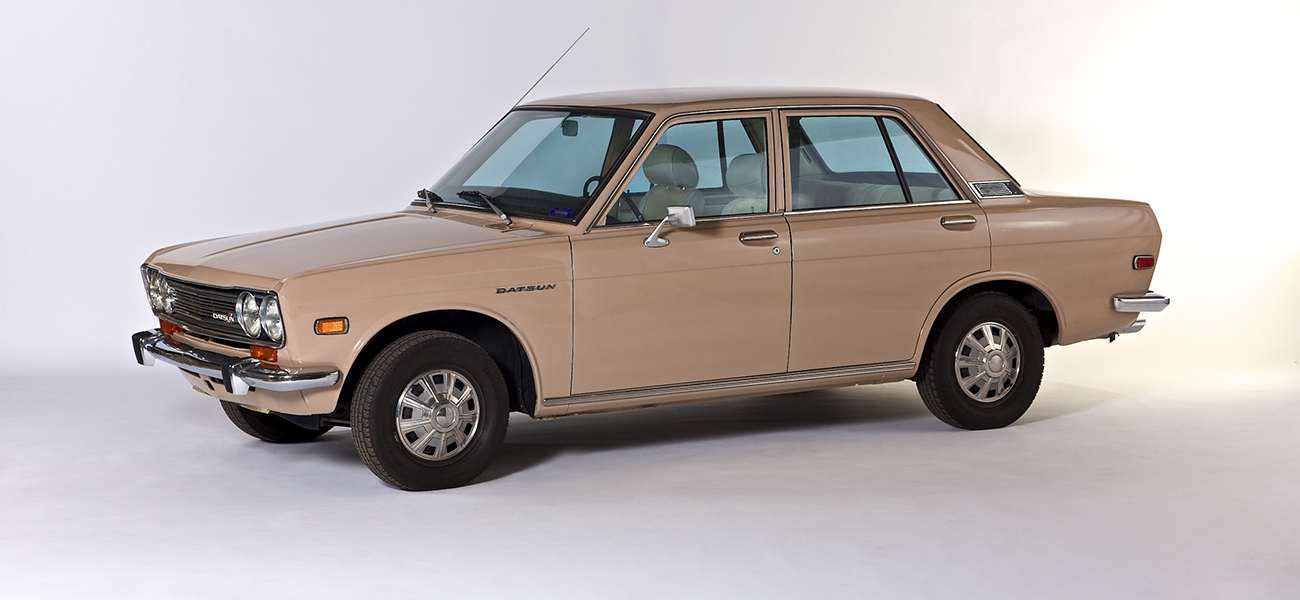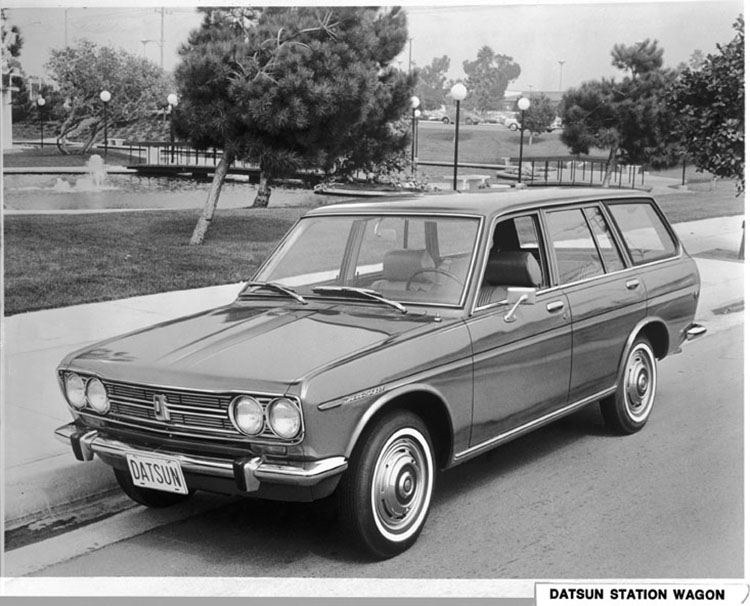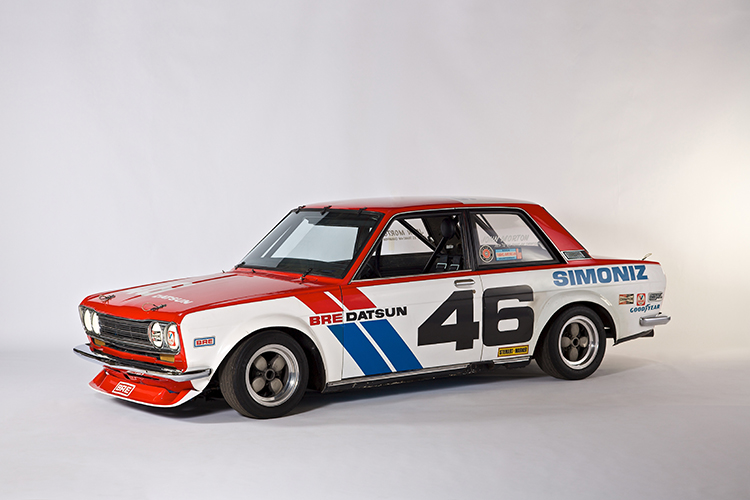Nissan Heritage Collection spotlight: Datsun 510
The 510 helped kick-start Nissan’s fortunes in the U.S. and paved the way for decades of sedan success
Situated in the basement of the Lane Motor Museum in Nashville, Tennessee, the Nissan Heritage Collection houses a number of production and concept vehicles significant to the brand's U.S. operations. This is the second story in a series that will highlight select vehicles in the collection.
It was 65 years ago that Nissan began selling Datsun-branded cars in the U.S., with the Datsun 1200 sedan arriving stateside in 1958. Yet in the face of strong domestic and European competition, Datsun models struggled to make a big dent in the U.S. car market – until the arrival, a decade later, of the Datsun 510.
Legendary Nissan executive Yutaka Katayama – known as "Mr K" and widely recognized as the father of the Z sports car – played a large role in the success of the 510. Benchmarking European competition, Katayama convinced leadership that Nissan needed a car with a higher standard of design and performance if the Japanese brand was to survive in the ultra-competitive U.S. market.
The Datsun 510 descended from the Bluebird series and arrived in the U.S. for 1968. Attractive and fun-to-drive, yet economical to own, it was offered initially as a sedan and a wagon. A two-door coupe joined the lineup later.
The 510 was sold as a four-door sedan, a station wagon and as a two-door coupe.
Technical highlights included sporty yet comfortable independent suspension and a sprightly 96-horsepower, 1.6-liter inline-four engine. Contemporary reviewers appreciated the performance of the Datsun 510 and compared it favorably to European rivals – but at a more accessible cost.
The 510 proved to be a big success, with 300,000 U.S. sales over its short production run through 1973; in 1971, 510 models alone accounted for over 40% of Nissan's U.S. sales. The car helped put the Japanese brand on the map in the competitive American car market and was a boon for Nissan's small but growing dealer network.
"Our dealer friends, with whom we had shared the hard times, were able to grow into successful businessmen in handsome suits," Katayama said in an earlier interview with Nissan. "But all of them were very grateful and they thanked Nissan for helping them achieve such success."
1970 BRE Datsun 510 Race Car
The car also made its mark on the world of motorsport, with the #46 Datsun 510 race car clinching the SCAA 2.5 liter Trans Am Championship in 1971 and 1972. It was Nissan's first professional racing win and was soon followed by an array of racing successes in international competition. To this day, the 510 remains active and revered in club racing.
Perhaps more important, though, was that the 510 paved the way for generations of Nissan sedans to come, as the first in a long series of "4-Door Sports Cars." Its lineage traces to the Datsun 810 Maxima, kicking off more than four decades of the Nissan Maxima as the company's flagship sedan. Nissan continues to prioritize sedans that provide technology, style, and fuel efficiency at accessible prices, with the Altima, Sentra and Versa.
Today there are three 510 models in the Nissan Heritage Collection: A Datsun 510 coupe race car built by Brock Racing Enterprises, and returned to Nissan after its last racing season; a 1972 Datsun 510 sedan purchased from its previous owner in 2013; and a 1972 Datsun 510 wagon, which was donated to Nissan according to the last will and testament of a newspaper writer who had a strong relationship with Yutaka Katayama. The Nissan Heritage Collection is currently open via private tour only.
See more highlights from the Nissan Heritage Collection:


